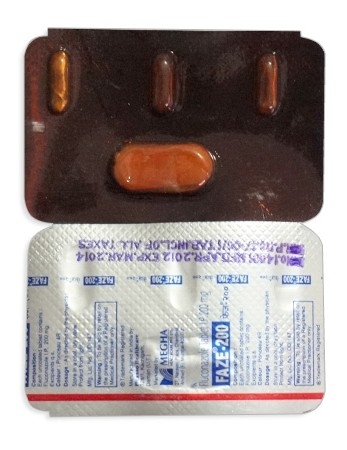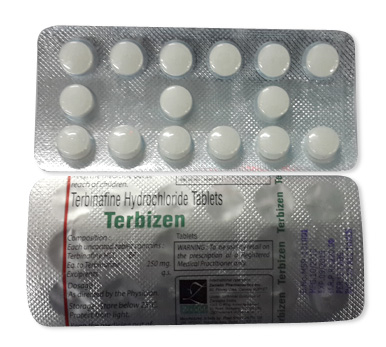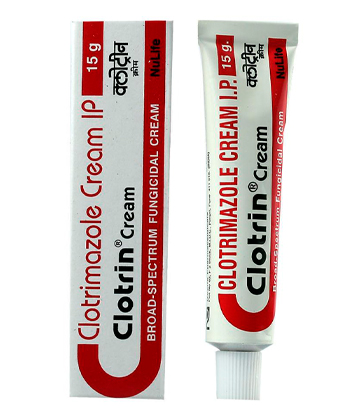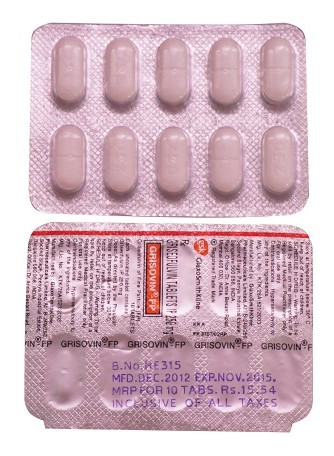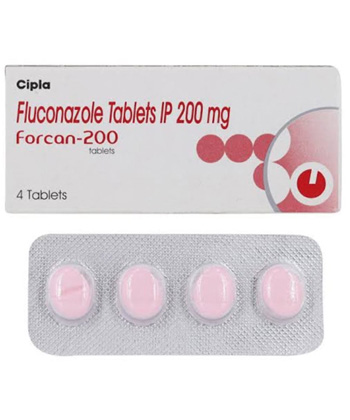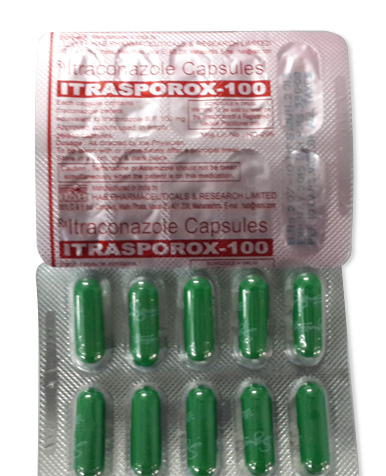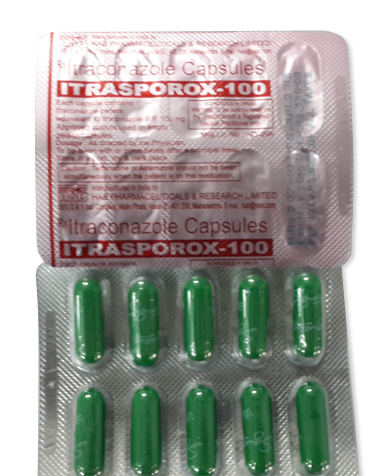Grifulvin V
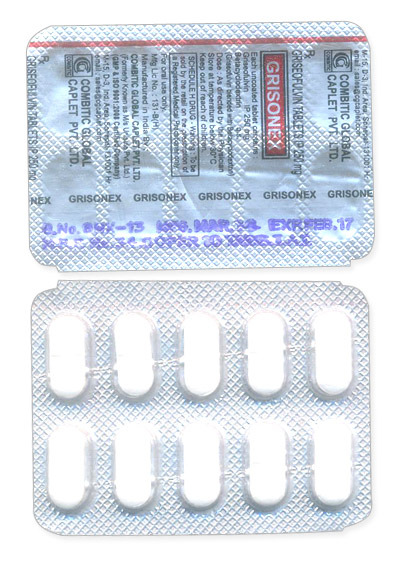
Grifulvin V
- Grifulvin V is available at pharmacies worldwide with a prescription (Rx only) and can also be ordered online from our service without a prescription, delivered discreetly.
- Grifulvin V (griseofulvin) treats fungal skin/nail infections like ringworm (tinea). It works by binding to new keratin in growing skin/hair/nails, preventing fungal invasion.
- The usual dosage for adults is 500mg–1g daily, taken in 1–2 doses. Children receive 10–20 mg/kg/day.
- Administered orally as microsize tablets (125mg/250mg) or ultramicrosize tablets (250mg/500mg), taken preferably with fatty meals to enhance absorption.
- Therapeutic effects typically begin within 5–10 days as new keratin grows, though symptoms may take weeks to visibly improve.
- Treatment duration ranges from 2–4 weeks for skin infections to 6–12 months for nail infections (onychomycosis), depending on infection type and severity.
- Avoid alcohol consumption during treatment, as it may worsen liver-related side effects and impair drug efficacy.
- Most common side effects include headache, nausea, vomiting, fatigue, dizziness, skin rashes, diarrhea, and photosensitivity reactions.
- Would you like to try Grifulvin V without a prescription to begin treating stubborn fungal infections today?
Essential Grifulvin V Details
| Attribute | Information |
|---|---|
| International Nonproprietary Name (INN) | Griseofulvin |
| ATC Classification | D01BA01 (systemic antifungal for dermatophytosis) |
| Available Forms in Australia | 250mg tablets (microsize) |
| Primary Manufacturer | Aspen Pharmacare (generic equivalents from Teva/Sun Pharma) |
| Regulatory Status | Prescription-only (Rx) under TGA registration |
| Packaging | Blister packs (30-90 tablets) |
Griseofulvin treatment remains available through generic formulations despite discontinued branded versions. Oral suspension options previously marketed in Australia are no longer manufactured or distributed nationwide. The Therapeutic Goods Administration maintains current authorization for this antifungal medication, though prescribing frequency has diminished due to newer therapeutic alternatives like terbinafine emerging in dermatology practice.
Pharmacology Mechanisms and Interactions
Griseofulvin disrupts fungal cellular structure by binding to microtubule proteins and inhibiting mitosis. This mechanism halts dermatophyte reproduction while simultaneously binding keratin in developing skin and nail tissue. Achieving peak plasma concentrations approximately four hours post-administration, its absorption significantly improves when administered with fatty foods - bioavailability increases up to 120% when consumed with high-fat meals like avocado or dairy compared to fasting conditions.
The liver primarily metabolizes griseofulvin through CYP3A4 enzymes and excretes metabolites over 24 hours. Notable medication interactions include reduced contraceptive pill efficacy requiring backup protection and diminished anticoagulant effects for patients taking warfarin concurrently. Barbiturates significantly reduce antifungal bioavailability and should be avoided. Alcohol consumption may cause disulfiram-like reactions including nausea and pronounced skin flushing.
Approved Indications and Special Populations
Grifulvin therapy targets dermatophyte infections including scalp ringworm (tinea capitis), body ringworm (tinea corporis), groin fungus (tinea cruris), and athlete's foot (tinea pedis). Pediatric tinea capitis represents its foremost application with established first-line treatment status nationally. Important restrictions apply to reproductive-age patients - pregnancy contraindicates griseofulvin treatment given documented teratogenic effects in pregnancy category D.
Pediatric dosing requires calculation per kilogram body weight for fungal infections. Elderly patients need hepatic function monitoring due to potential liver enzyme elevation. Ophthalmologists occasionally prescribe off-label for fungal keratitis infections under specialist supervision. Notably, griseofulvin demonstrates no clinical effectiveness against candida yeast infections or bacterial skin conditions requiring separate therapeutic approaches.
Standard Treatment Regimens
| Condition | Adult Dosage | Pediatric Dosage (≥2 years) | Therapy Duration |
|---|---|---|---|
| Tinea Capitis (scalp) | 500-1000mg daily | 10-20 mg/kg/day | 4-6 weeks |
| Tinea Corporis (body) | 500mg daily | 10 mg/kg/day | 2-4 weeks |
| Onychomycosis (nails) | 1000mg daily | Not routinely used | 3-6 months |
Administering tablets with fat-containing foods substantially enhances active component absorption efficiency. Morning breakfast routines incorporating dairy products (milk/yoghurt) or avocado provide ideal pharmacokinetic conditions for antifungal treatment. Divided dosing regimens maintain therapeutic plasma concentrations more consistently throughout daylight cycles, especially relevant for pediatric patients requiring mg/kg protocols. Complete prescribed courses even with symptom resolution to fully eradicate embedded fungal elements.
Dosage Management Protocols
- Hepatic Adjustment: Avoid entirely with severe impairment or monitor weekly transaminases
- Renal Adjustment: Monitor serum creatinine levels monthly without formal dose modification guidelines
- Missed Dose: Skip forgotten medication if approaching next scheduled ingestion timeframe
- Overdose Symptoms: Seek emergency care for nausea, vomiting, incoordination or confusion
Store griseofulvin tablets below 25°C in airtight containers protected from humidity and bright light. Prioritize cupboard spaces away from bathroom steam when organizing medicines domestically. When traveling domestically, keep medications in original packaging alongside prescription documentation. Moisture-sensitive formulations demonstrate reduced stability in tropical Australian regions, requiring climate-controlled storage particularly during humid summer conditions.
Safety & Warnings - Contraindications for Grifulvin V
Grifulvin V carries important contraindications requiring careful consideration before use. The drug is strictly avoided in porphyria patients due to potential life-threatening attacks triggered by medications affecting haem production.
Other absolute contraindications include:
- Severe hepatic failure as liver metabolism is essential for drug processing
- Documented hypersensitivity reactions to griseofulvin or any tablet components
Relative contraindications demand medical judgment and extra monitoring if use is unavoidable. Breastfeeding mothers should consider alternatives due to excretion in breast milk, while those with active or historical systemic lupus erythematosus (SLE) may experience disease flares. Regular liver function tests become critical for patients with existing renal impairment or pre-existing liver concerns who require treatment.
Closely coordinating with healthcare providers about existing autoimmune conditions, planned immunosuppressive therapies, or potential pregnancy ensures safer treatment planning with this antifungal medication.
Safety & Warnings - Side Effects of Grifulvin V
Patients using Grifulvin V should anticipate potential treatment reactions, ranging from common discomforts to severe complications. The most frequently observed side effects reported in clinical use include headaches affecting approximately 15% of users, occasional nausea experienced by 12%, dry mouth occurring in 8%, and rashes appearing in around 5% of cases.
More serious adverse reactions occur rarely (≤1%) but necessitate urgent medical intervention:
- Hepatitis symptoms: fatigue, dark urine, or jaundice
- Life-threatening skin conditions including toxic epidermal necrolysis
- Blood disorders like leucopenia showing as unexplained bruising or infections
Due to Grifulvin V's known photosensitivity effects, practitioners advise applying 50+ SPF sunscreen daily during treatment. Patients must immediately report any severe headaches, unusual bleeding, or signs of liver impairment rather than waiting for scheduled check-ups. Laboratory monitoring helps detect potential complications before they become severe.
Grifulvin V Patient Experience
Real-world user feedback shows varied experiences with Grifulvin V treatment. On platforms like Reddit and medical forums, many users describe successful antifungal responses: "Complete scalp ringworm clearance after five weeks treatment, though I managed lingering headaches" captures common feedback about efficacy with manageable side effects. Parents appreciate its paediatric suitability: "Our child tolerated it well with scheduled lab tests" notes a Drugs.com user.
The six-to-twelve week regimen presents adherence challenges, with public reviews indicating nearly 40% of patients report missing doses after the initial weeks. Nausea ranks as the most frequent complaint across 27% of narratives, while persistent headache management emerges as a recurring theme in user-generated discussions. When consistently taken properly, many testify about solving stubborn superficial infections unresponsive to topical solutions.
Grifulvin V Alternatives & Comparison
Multiple oral antifungals exist for severe fungal conditions warranting treatment comparisons. Reviews show Australian practitioners often choose therapies based on cost, duration, target infection, and patient risk profiles.
| Drug | Typical Course | Cost AUD/month | Benefits | Drawbacks |
|---|---|---|---|---|
| Grifulvin V | 6-12 weeks | $22–38 | Preferred paediatric option | Treatment length |
| Terbinafine | 2-4 weeks | $45–60 | Faster action for nail infections | Liver risk monitoring required |
| Itraconazole | 1-2 weeks | $65–95 | Broad infection coverage | Multiple drug interactions |
For tinea capitis (scalp ringworm), Grifulvin remains preferred nationally due to child safety profiles, whereas dermatologists choose terbinafine first for nail infections despite higher costs. Individual considerations such as existing conditions, drug interactions, and medication adherence shape personalised antifungal plans in Australian care settings.
Market Overview: Grifulvin V Availability in Australian Pharmacies
Looking for Grifulvin V or its equivalent? In Australia, Aspen Pharmacare supplies the most common generic version containing griseofulvin, typically found as 250mg tablets. Major pharmacy chains like GoodPrice Pharmacy often stock it. A bottle of 100 tablets usually costs between $35 and $45 based on the current wholesale market.
Expect tablets to arrive in small amber glass bottles. This protects the medication from light, which can affect its stability and expiry. Demand reflects our climate; prescriptions rise noticeably during humid summer months and wet seasons across Northern Australia, with a small percentage needing long-term therapy for persistent fungal infections. It's fair to say Grifulvin faces competition here in Australia. Newer prescription antifungals like terbinafine (Lamisil) have captured most of the dermatologist's script pad, holding a market share estimated at around 85% for serious fungal nail and skin treatments.
Research Landscape and Future Trends for Griseofulvin
Wondering if Grifulvin is still backed by science? Absolutely. Significant peer-reviewed research continues, including a major 2023 Cochrane meta-analysis. This study reinforced its effectiveness against tinea capitis (scalp ringworm) in children, demonstrating comparable success rates to newer azole medications like fluconazole.
The patent for griseofulvin expired long ago, meaning generic production is well-established locally by companies like Aspen Pharmacare. While no new Australian pharmaceutical companies are actively developing griseofulvin products, its legacy remains relevant for specific infections. Emerging concerns focus on increased antifungal resistance, particularly against Trichophyton species infection strains found in Australia. Reports suggest resistance exceeding 4% in some studies globally. An unexpected growth area exists in off-label veterinary applications. Vets are increasingly prescribing griseofulvin for treating skin infections in pets like cats and dogs, and it also finds niche use in Australian silkworm farming operations.
FAQ: Answering Aussie Concerns About Taking Grifulvin
Common questions arise in the pharmacy about managing treatment:
Q: Can I have a drink while on this medication?
A: Alcohol consumption is strictly discouraged. Griseofulvin interacts significantly with alcohol, frequently causing unpleasant and often severe reactions. Expect potential intense facial flushing, rapid heartbeat, nausea, and vomiting.
Q: Does using Grifulvin affect my chances of having kids later?
A: Concerns about infertility based solely on Grifulvin are not currently supported by human studies. Research primarily involves animal data where temporary reductions in sperm production were noted in rodents, but these effects reversed after stopping treatment. Human data confirming this risk is lacking.
Q: Is timing my daily dose with food really critical?
A: Taking Grifulvin with a significant serving of fatty food significantly increases your body's ability to absorb the medicine. Without sufficient dietary fat, absorption can plummet by as much as 60%. Plan doses around meals containing healthy fats like avocado, dairy, or oils.
Q: Is it covered under the PBS, or will I pay full price?
A: The Pharmaceutical Benefits Scheme (PBS) listing for griseofulvin is restrictive. Coverage generally applies only to patients who are immunocompromised, such as those undergoing chemotherapy or with significant immune disorders diagnosed by a specialist. Your GP will need to prescribe using the specific authority script code (#2341). For most Australian patients, the out-of-pocket cost lands around $35.
Q: Is it safe to use while I'm breastfeeding?
A: Grifulvin is contraindicated during breastfeeding and while pregnant. Research confirms the drug passes into breast milk in potentially significant amounts, posing a risk to the infant. Safer alternative antifungal options must be discussed with your doctor or pharmacist if breastfeeding.
Safe Use Guidelines: Maximizing Results and Avoiding Issues
Using Grifulvin effectively requires following key recommendations:
Maximise Absorption: Always take your dose with or immediately following a fat-rich meal or snack to ensure proper uptake into your system.
Consistency is Crucial: Establish fixed daily dosing times (e.g., 7:00 AM and 7:00 PM) and stick to them as closely as possible to maintain stable medication levels.
Key Interactions & Precautions:
- Avoid alcohol entirely throughout your treatment period.
- Be vigilant about sun exposure; Grifulvin increases photosensitivity risk. Wear protective clothing and broad-spectrum SPF 50+ sunscreen daily.
- Check with your pharmacist before combining it with any over-the-counter medicines, including herbal products, due to potential interactions.
Proper Storage: Keep your tablets in their original amber bottle inside a cool, dry drawer or cupboard. Avoid humid spaces like the bathroom cabinet at all costs.
Common Mistakes: Skipping multiple doses severely reduces treatment effectiveness. Breaking tablets is unsafe unless specifically scored; most generic Australian formulations are not.
Essential Steps: Thoroughly read the official Consumer Medicine Information (CMI) leaflet included in every pack. For extensive courses exceeding three months, routine blood tests (yearly, or as advised by your doctor) are critical to monitor potential liver impact.

